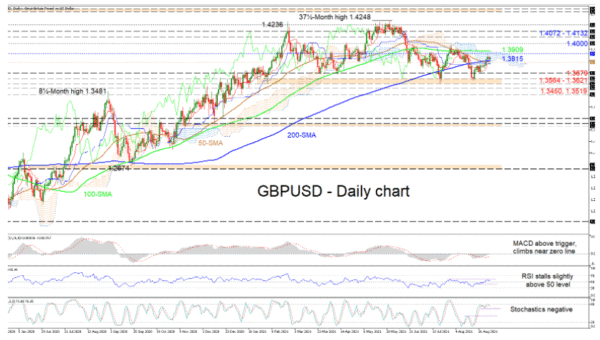GBPUSD has managed to settle above the 200-day simple moving average (SMA) around 1.3815 after a bounce within the support base of 1.3564-1.3621. The 100- and 200-day SMAs are endorsing the recently adopted neutral phase in the pair, while the negative bearing of the 50-day SMA has also eased.
The unclear Ichimoku lines are not confirming any price direction, while the short-term oscillators are providing mixed signals in directional momentum. The MACD is above its red trigger line and is flirting with the zero line, while the RSI is showing signs that positive momentum is starting to pick up again. That said, the stochastic oscillator is not far from the 80 level and has yet to cement its freshly acquired negative charge.
If buyers find some traction off the 50- and 200-day SMAs, preliminary resistance could develop between the nearby high of 1.3890 and the 100-day SMA at 1.3909. In the event buyers jump above the Ichimoku cloud’s upper surface and the 100-day SMA at 1.3909, the crucial border at 1.4000 may receive some fire. A break above this could reinforce upside momentum with the next resistance region of 1.4072-1.4132 coming into focus.
As things stand, immediate support could emanate from the 200- and 50-day SMAs at 1.3815 and 1.3800, and the lingering Ichimoku lines just beneath. If sellers manage to drive the price lower, the 1.3679 barrier may delay the test of the critical support base of 1.3564-1.3621. Should this foundation break down, negative forces could then target the troughs in mid-January of 1.3519 and 1.3450 respectively.
Summarizing, GBPUSD is exhibiting a neutral-to-bullish bias in the short-term timeframe. A break above 1.4000 could bolster the upside picture, while a break below 1.3564 may strengthen negative price action.














